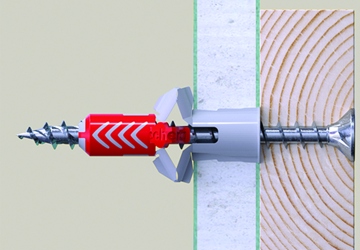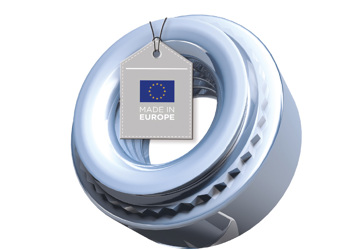

Mechanical expansion anchors can be divided into two groups: Torque controlled or displacement controlled anchors. Torque controlled expansion anchors may be further classified as either sleeve or bolt type.
The JCP heavy-duty anchors are sleeve-type anchors. They consist of a bolt or threaded rod with a nut, washer, spacer sleeve, plastic compression ring, which deformation prevents the spinning of the anchor in the hole, as well as an expansion sleeve. These anchors work by expanding against the walls of the hole in which they are installed, creating a tight and secure connection.
The JCP heavy-duty anchors are ETA certified mechanical anchors, suitable for cracked concrete and are widely used in construction, engineering and industrial applications. These types of anchors provide a secure and long-lasting connection between the load bearing structure and the anchor point. However, choosing the right type of mechanical anchor and correctly installing it is critical for ensuring the safety and reliability of the structure.
Three different models of the JCP heavy-duty anchors are available – hexagon bolt, hexagon nut and for flush surface mounting, a countersunk option. All models from M8 are approved for use under seismic actions C1 and C2. The JCP heavy-duty anchors also come in zinc plated or A4 stainless steel. The choice of material/finish will depend on the application and the environment in which they will be installed.
The diameter and length of the anchor can impact the load capacity of the anchor. Generally, a larger diameter and longer anchor will have a higher load capacity. The length of the anchor should also be chosen based on the thickness of the fixture being anchored. The load capacity of the anchor will depend on several factors, including the type of anchor; the concrete being anchored; and the installation method.
Proper installation is critical for ensuring the safety and reliability of the structure. For JCP heavy-duty anchors, the key steps for correct installation include drilling the hole, cleaning the hole, inserting the anchor, and tightening the anchor to the right tightening torque.
Anchors should be tested to ensure they meet the required load capacity and performance standards. Additionally, anchors should be certified by an independent testing agency to ensure their quality and reliability. The test regimes and methods are based on the available EADs (European Assessment Documents) and TRs (Technical Reports) and any applications should be assessed and verified according to ETAG001-Annex C or EN 1992-Part 4. This process can be done using the JCP Anchor Calculator, which is free and available at www.jcpfixings.co.uk.

Will joined Fastener + Fixing Magazine in 2007 and over the last 12 years has experienced every facet of the fastener sector – interviewing key figures within the industry and visiting leading companies and exhibitions around the globe. Will manages the content strategy across all platforms and is the guardian for the high editorial standards that the brand is renowned.





